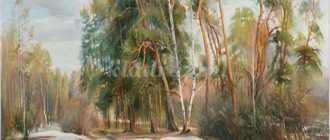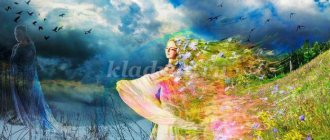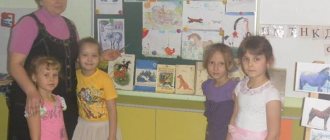reference Information
Documents • Laws • Notices • Document approvals • Contracts • Requests for proposals • Technical specifications • Development plans • Document management • Analytics • Events • Competitions • Results • City administrations • Orders • Contracts • Work execution • Protocols for consideration of applications • Auctions • Projects • Protocols • Budgetary organizations Municipalities • Districts • Education • Programs Reports
: • by references • Documentary base • Securities
Regulations
: • Financial documents
Resolutions
: • Categories by topic • Finance • cities of the Russian Federation • regions • by exact dates Regulations
Terms
: • Scientific terminology • Financial • Economic
Time
: • Dates • 2015 • 2016 Documents in the financial sector • in the investment sector • Financial documents - programs
Spring changes
Spring is a time of year similar to early morning. Nature awakens from winter sleep. The sun's rays begin to warm the frozen ground. Everything around comes to life, filling the air with cheerful sounds.
The last frosts are still making themselves felt, but we can already note the three first signs of the coming spring:
| Sign | Description |
| Snow melting | The days are getting a little warmer and the snow lying on the roadsides is beginning to settle. Its top layer hardens, forming dense ice. Melted snow takes on a grayish tint and gradually turns into streams. |
| The sound of drops | At the same time as the snowdrifts, the icicles begin to thaw. Droplets of water falling from the roofs ring, breaking on the asphalt and forming numerous puddles. |
| Weather variability | In early spring the weather changes frequently. Winter is in no hurry to retreat; you can often see snow or rain outside the window. Frosts are possible. However, the sun appears more and more often, and the cold is replaced by warmer days. Gradually there are more and more of them. |
Education and science
Science
: Tests • Scientific and technological progress • Pedagogy • Work programs • Faculties • Methodological recommendations • School • Vocational education • Student motivation
Subjects
: Biology • Geography • Geology • History • Literature • Literary genres • Literary characters • Mathematics • Medicine • Music • Law • Housing Law • Land Law • Criminal Law • Codes • Psychology (Logic) • Russian Language • Sociology • Physics • Philology • Philosophy • Chemistry • Jurisprudence
Business and finance
Business
: • Banks • Wealth and prosperity • Corruption • (Crime) • Marketing • Management • Investments • Securities: • Management • Open Joint Stock Companies • Projects • Documents • Securities - control • Securities - valuations • Bonds • Debts • Currency • Real estate • (Rent) • Professions • Work • Trade • Services • Finance • Insurance • Budget • Financial services • Loans • Companies • State enterprises • Economics • Macroeconomics • Microeconomics • Taxes • Audit Industry
:
• Metallurgy • Oil • Agriculture • Energy
Construction
• Architecture • Interior • Floors and ceilings • Construction process • Building materials • Thermal insulation • Exterior • Organization and production management
Photo blogs
Art
• Children's creativity • Paintings • Art • Congratulations • Film review • Musical world • Russian rock
World
• People of the world • The world around us • My homeland is the USSR • Nature Channel • Stones and minerals • Cooking, food • Construction and architecture • Under construction • Transport • Weapons • Military transport
beauty
• Fashion Pandia.ru • Girls and Girls
School
• Tests for the Unified State Exam • Solver books • Unified State Examination • 10th and 11th grades • Various textbooks • 4th grade • Russian language grades 5-9 • 5th grade • 6th grade • 7th grade • 8th grade
Wisdom
• Cliparts • Quotes
Author Directory (private accounts)
AutoAuto service • Auto parts • Products for auto • Auto repair centers • Auto accessories • auto parts for foreign cars • Body repair • Auto repair and maintenance • Car chassis repair • Auto chemicals • oils • technical centers • Gasoline engine repair • auto electrical repair • Automatic transmission repair • Tire fitting BusinessAutomation of business processes • Online stores • Construction • Telephone communications • Wholesale companies LeisureLeisure • Entertainment • Creativity • Catering • Restaurants • Bars • Cafes • Coffee shops • Night clubs • Literature TechnologiesAutomation of production processes • Internet • Internet providers • Communications • Information technologies • IT companies • WEB studios • Website promotion • Software sales • Switching equipment • IP telephony | InfrastructureCity • Authority • District administrations • Courts • Utilities • Teen clubs • Public organizations • City information sites The sciencePedagogy • Education • Schools • Training • Teachers GoodsTrading companies • Trade and service companies • Mobile phones • Accessories for mobile phones • Navigation equipment |
Summary of a comprehensive lesson in the senior group on the topic: Spring
Summary of a comprehensive lesson in the senior group “Journey through Spring.”
Pavlova Galina Anatolyevna teacher of MBDOU "Kindergarten "Malysh" Smolensk region, Roslavl.
Complex thematic planning involves the child living through one topic for a certain period in various types of activities.
Therefore, it is logical to hold an event at the end of the thematic period that will allow children to summarize and consolidate their acquired knowledge in an interesting way, apply it in practical activities, activate children’s cognitive and communication skills, form positive relationships between students, the ability to interact in a team, and the teacher to understand how well the material has been learned. Immersion in the topic: “Spring” made it possible not only for the teacher to integratively solve educational problems from different educational areas, but also to use all types of children’s activities that are organized in the most interesting and useful way for children. The careful preparation of the teacher for the thematic day fully pays off with the emotional - positive reaction of the children, their maximum activity. This lesson has been tested in practice and has been tested by me and my colleagues in working with children of senior preschool age. I hope that it will be useful for kindergarten teachers. GOAL: to form an idea of spring as a period of awakening of nature. Convey in the drawing the characteristic features of spring nature (spring sunset). Educational: consolidate and generalize knowledge about spring phenomena in nature. Learn to write a story using pictures. Learn to place the drawing on the entire sheet of paper. Developmental: develop children's logical thinking by solving logical problems. Develop an interest in learning about nature. Develop visual and auditory perception. Develop the skill of obtaining a new shade by mixing paints, the skill of drawing on raw materials in order to obtain the effect of blur, translucency, and develop a sense of composition. Educational: to cultivate in children a love of nature, a culture of communication, to teach them to prove their opinions, to lead a discussion, to defend their opinion on visual activities. Material for the lesson: Picture of spring. Pictures of natural phenomena in spring. Pictures of spring sunset. Watercolor paints. Wax crayons Brushes. Cans of water. Sheets of white paper. Napkins. Educator : today we are going on a trip. Do you agree. Children...... Educator: we will go to visit a time of year that everyone likes, but to find out what time we will talk about, you must guess the riddle. Listen carefully. Riddle: A beauty walks, touching the ground lightly. He goes to the field, to the river, and along the snow and the flower. Children……(spring). Educator: maybe it’s not spring? Guys, here is the answer to this riddle. I do not get it? Envelope, to find the answer you must answer the questions. Let's try to answer. Children…. Educator: I think we can handle it. 1. The streams are running faster, the sun is shining warmer. Sparrow is happy about the weather. He stopped by our kindergarten. What month is this poem about? Children……(March). It's frosty at night In the morning - drops So it's in the yard. Children……..(April). The garden tried on the color white, The nightingale sings a sonnet, Our land is dressed in greenery We are greeted with warmth. Children……(May). Educator: Guys, let's remember the spring months? Children……..(March, April, May) 2. Between the branches there is a new house. There is no door in that house, Only a round window, Not even a cat can get through. Children……..(birdhouse).
Educator: Who lives in the birdhouse? Children......(starlings) Educator: What geometric shapes does the birdhouse consist of? Children…….(rectangle, triangle, circle). 3. In a forest clearing, a small flower has grown and is hiding in the dead wood. Little white. Children:...(snowdrop)
Educator: Count how many snowdrops have bloomed? Children...... Educator: guys, looking at this picture, we can say that this is
(spring). And today we will talk about spring. Educator: Why is spring called red? Children…….. Educator: Let's continue our journey through the spring. Here is another task (an envelope with pictures depicting signs of spring). To complete the task you must split into groups. To do this, take a circle of the color you like and stand at the table with a circle of the same color as yours. Listen to the task. Arrange the signs of spring from earliest to late. Let me remind you, we lay them out from left to right in order (children work at tables). After completion, the teacher evaluates the correctness of the task. I propose to tell you where spring begins (based on reference pictures) and how it ends (for each picture, children express their opinion, the teacher generalizes). Educator: 1. Spring has come. Morning, the bright sun appeared. What does the sun do in spring? Children:...(shines, illuminates the earth, warms, warms, pleases). Educator: The air is permeated with the warm rays of the sun. In spring, the sun rises higher and shines brighter, and warms up warmer. What kind of miracles happen in the spring, when the sun warms up? Children:...(the snow is melting, streams are flowing, birds are flying, flowers are blooming). Educator: The sky turned blue. 2. Icicles hang from the roofs, when the sun gets hotter, the icicles begin to melt, and spring drops ring. 3. During the day the sun warms up more and more, do the first ones appear? Children:...(thawed patches) Educator: Murmuring, talkative rivulets began to run. Where do streams come from? Children:....(snow is frozen water and when it melts it turns into water again). 4. Educator: The first spring rain is drizzling, the puddles have spread widely. What do you like to do in spring? Children:….(walk through puddles, launch boats into them). 5. Educator: The winter hibernation of animals is ending. As the weather warmed up, a mother bear and her cubs emerged from the den. What does mother bear feed her cubs? Children….(milk). Educator: What other animals woke up in the spring? Children...(badger, hedgehog). Educator: now they are hungry and thin. 6. As soon as the snow melts, along the banks of rivers and streams, along the roads, people reach for the sun. Children.. (first flowers). Educator: What are the names of plants that bloom in spring? Children:...(primroses). Educator: What primroses are you familiar with? Children: ...(snowdrop, lily of the valley, dandelion, mother and stepmother). 7. Educator: the forest comes to life, young green shoots stretch upward - to the very sky. The snow melted, the first grass appeared, the buds of the trees swelled. 8. Migratory birds return from warm regions to their homeland. Why are they coming back? Children:..(there is enough food, insects have appeared, last year’s seeds and fruits can be found in thawed patches). Educator: Which birds arrive first? Children:..(rooks, then starlings and larks arrive). Educator: What do birds do in the spring? Children:..(make nests, lay eggs and hatch chicks) 9. Educator: insects crawl out to bask in the spring sun. Where do insects come from? Children:...(from cracks, from an earthen hole, from under tree bark) Educator: Name the insects that appear in the spring? Children:..(ladybug, butterflies, ants, midges). Educator : Guys, what a wonderful story we wrote about spring. Well done! Physical education lesson: Look, look, threads have reached out from the sky. This thin thread wants to sew the Earth and the sky, Rain, hurry up the rain, Dance with us together. (Warm-up to music: “The Guilty Cloud” by D. Tukhmanov). The children remain standing. Educator: (invites you to close your eyes, the music of the voice of nature sounds). Imagine that we are in a spring forest. In spring, everything in the forest comes to life, wakes up and is filled with thousands of sounds. Listen to the birds singing, the murmuring of a stream, take a deep breath, exhale and inhale again, rise on your toes, arms up, stretch, exhale (open your eyes). What is the spring air like? Children:...(light, fresh, fragrant, forest). Educator: the spring day is coming to an end. The sun is setting. Today we will learn to draw a sunset, a spring sunset. Shall we try? Children:….. Educator : Invites you to sit at the tables. Showing paintings of sunset. The sunset is so different from one another. And sunsets are always unusually beautiful. What is surprising about the sunset? First of all, the yellow color of the setting sun catches your eye. And the color red is not near it. We watch the sunset at the end of the day. What colors do you see in the paintings? Children:...(yellow, red, blue, purple). Educator: I will show you how to draw a spring sunset with watercolors and wax crayons. I’ll start drawing my picture using brown and black wax crayons. These will be trees and bushes. I will draw the trunk of the tree tortuous, slowly draw the branches of the tree, they can be different thin and thick, short and long. Then I use the technique of painting with watercolors on wet. Using this technique, colors turn out transparent, smoothly flow into one another, and merge. After moistening the sheet with water using a large brush, children tint it with watercolors. I start painting the sky using yellow, red, blue watercolor paints. Draw the clouds the way you want, the colors will mix, creating very interesting transitions. While the paint is still wet, I will outline the background with a darker shade, purple in contrast to the sky. We depicted a beautiful and colorful sunset. Independent work of children. (The music of F. Chopin “Spring Waltz” (melody of Paradise), F. Chopin “Waltz of Rain” (modern arrangement) sounds. Music will help you feel how nature wakes up after the winter cold. Listen to how the music conveys the spring mood and try to reflect it on paper. During the work, the teacher makes sure that the children hold their hand correctly and freely, without tension, and monitors the children’s posture. After the work is completed, the teacher examines the work, noting the children’s successful finds. Each of you tried, and in your drawings it is clear that nature has awakened and come to life. All the guys are great. Educator: Our journey through the spring has ended. Did you like it. Children...... Educator: Next time you and I will go on a new journey.
We recommend watching:
Scenario of spring entertainment in the senior group Summary of an integrated lesson in the senior group in kindergarten on the topic: Spring Summary of the lesson on the topic: Spring in the senior group of kindergarten with presentation Summary of an open lesson in the senior group on speech development on the topic: Spring
Similar articles:
Summary of a lesson on a spring topic in the senior group. Description of the painting by Savrasov “The Rooks Have Arrived”
Walking in the senior group. Card file with goals for March
Walking in the senior group. Card file with goals for April
Walking in the senior group. Card file with goals for May
Reading competition in the spring in kindergarten. Senior – preparatory group




